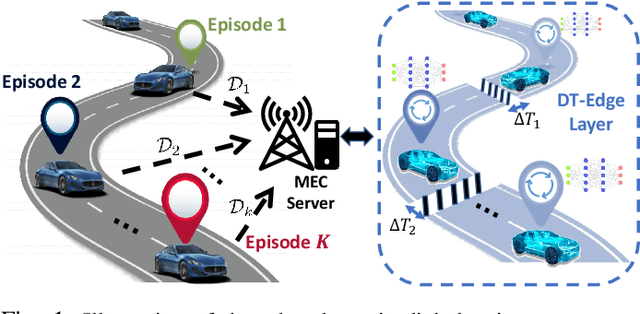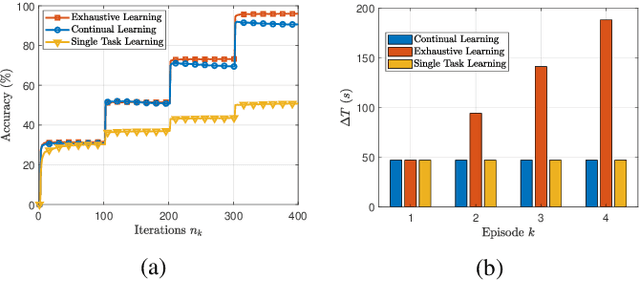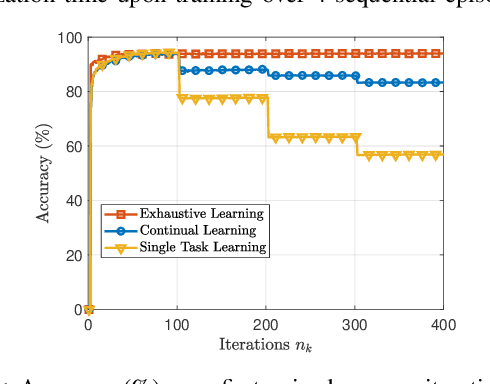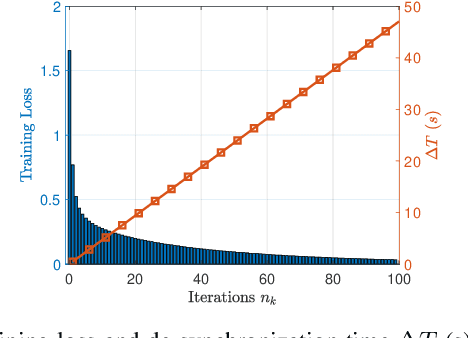Edge Continual Learning for Dynamic Digital Twins over Wireless Networks
Paper and Code
Apr 10, 2022



Digital twins (DTs) constitute a critical link between the real-world and the metaverse. To guarantee a robust connection between these two worlds, DTs should maintain accurate representations of the physical applications, while preserving synchronization between real and digital entities. In this paper, a novel edge continual learning framework is proposed to accurately model the evolving affinity between a physical twin (PT) and its corresponding cyber twin (CT) while maintaining their utmost synchronization. In particular, a CT is simulated as a deep neural network (DNN) at the wireless network edge to model an autonomous vehicle traversing an episodically dynamic environment. As the vehicular PT updates its driving policy in each episode, the CT is required to concurrently adapt its DNN model to the PT, which gives rise to a de-synchronization gap. Considering the history-aware nature of DTs, the model update process is posed a dual objective optimization problem whose goal is to jointly minimize the loss function over all encountered episodes and the corresponding de-synchronization time. As the de-synchronization time continues to increase over sequential episodes, an elastic weight consolidation (EWC) technique that regularizes the DT history is proposed to limit de-synchronization time. Furthermore, to address the plasticity-stability tradeoff accompanying the progressive growth of the EWC regularization terms, a modified EWC method that considers fair execution between the historical episodes of the DTs is adopted. Ultimately, the proposed framework achieves a simultaneously accurate and synchronous CT model that is robust to catastrophic forgetting. Simulation results show that the proposed solution can achieve an accuracy of 90 % while guaranteeing a minimal desynchronization time.
 Add to Chrome
Add to Chrome Add to Firefox
Add to Firefox Add to Edge
Add to Edge